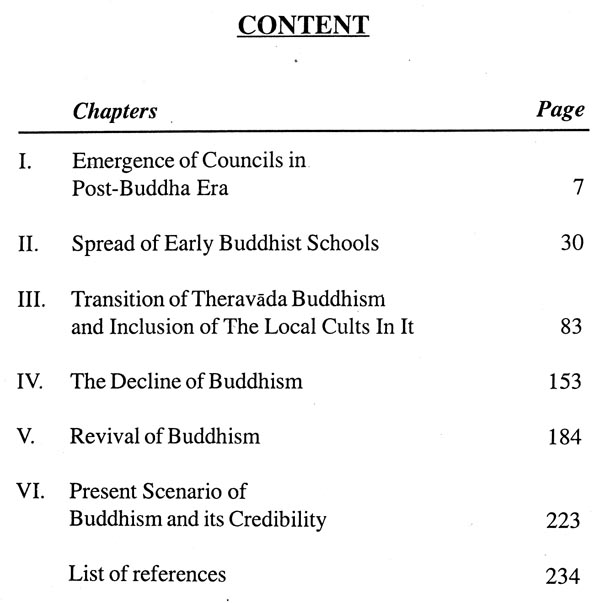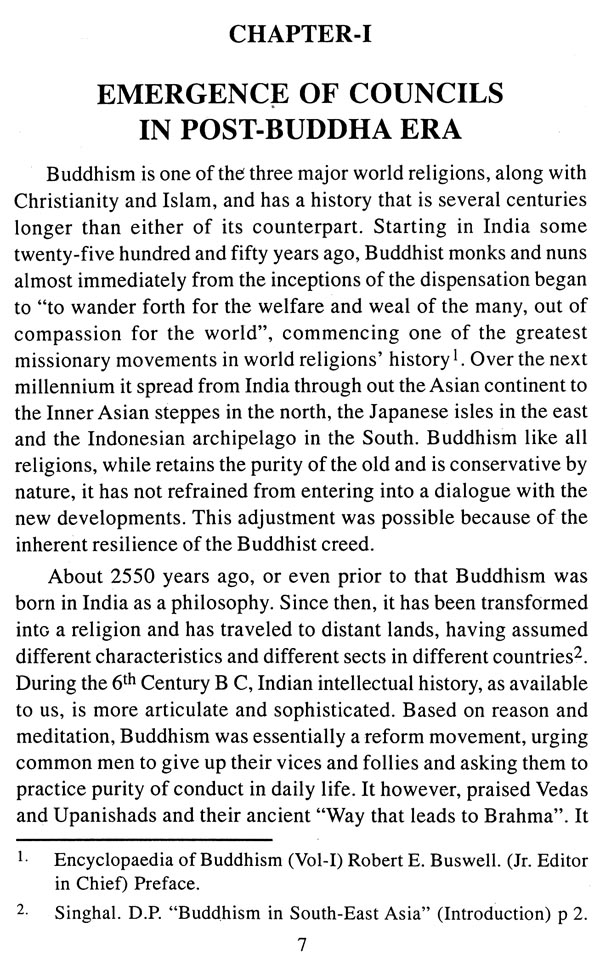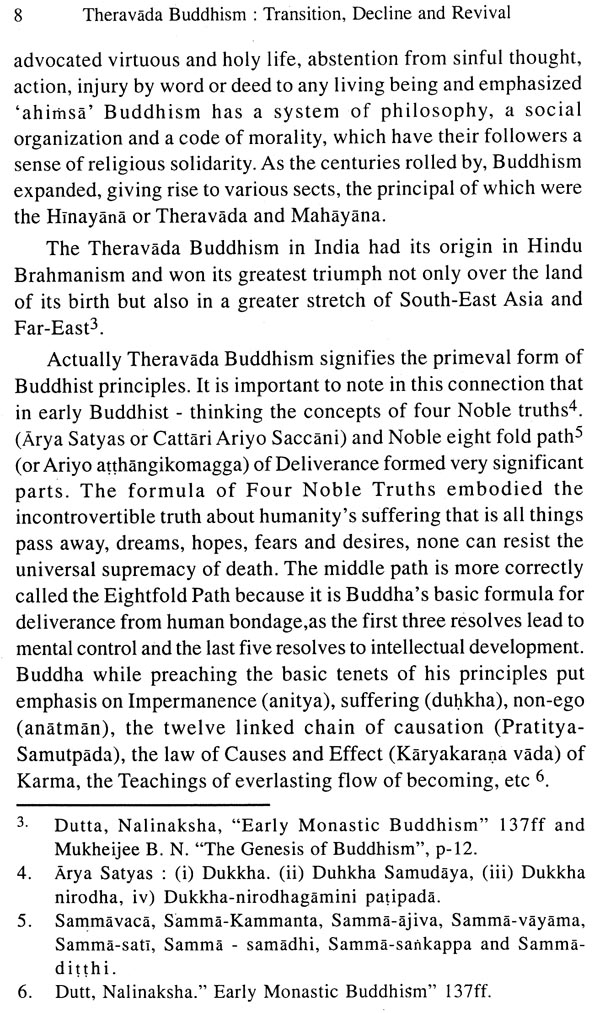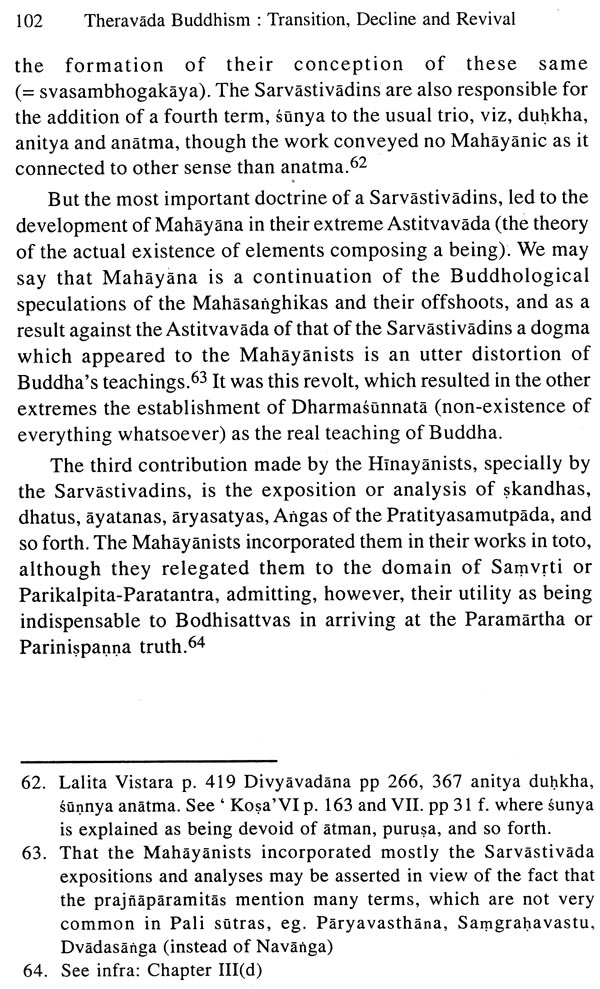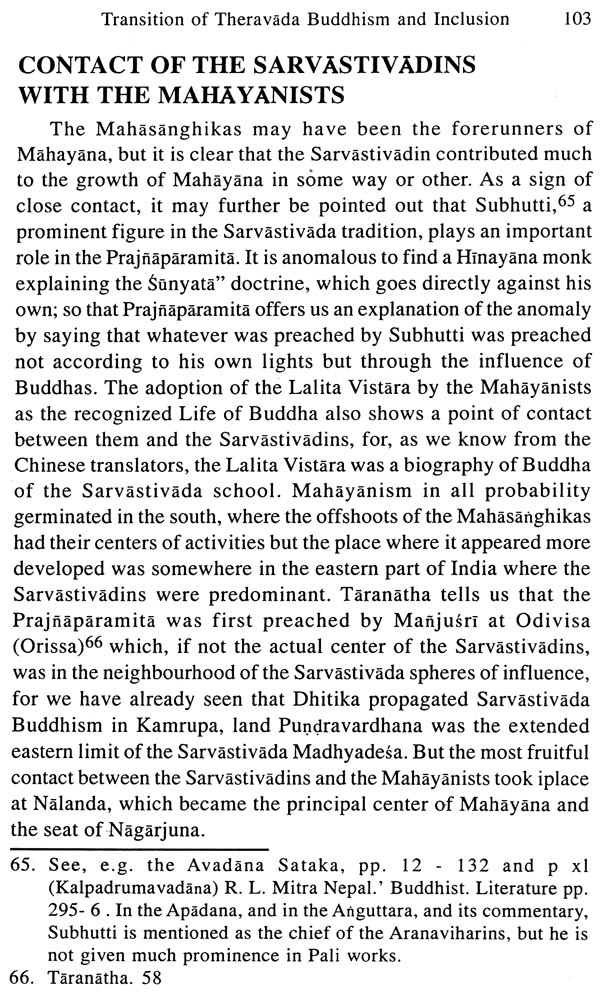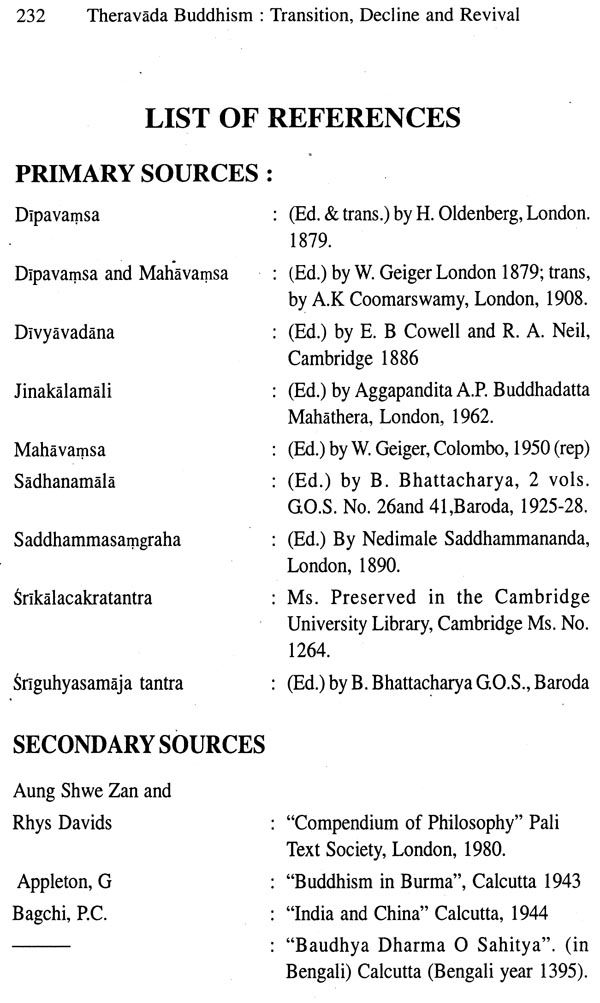About the Book Theravada Buddhism had its origin in Hindu Brahmanism and won its greatest triumph not only over the land of its birth but also in a greater stretch of South-East Asia and Far East. However, up to the First Buddhist Council the basic form of Buddhism remained almost unaltered but during the Second Buddhist Council the nature of early Buddhism or beliefs, practices and ideas came to influence Buddhist doctrine, giving shape to different varieties and amazing modifications. In fact right from that time onwards transition of Theravada Buddhism could be registered and finally Buddhism disappeared from its land of birth. Theravada Buddhism had its origin in Hindu Brahmanism and won its greatest triumph not only over the land of its birth but also in a greater stretch of South-East Asia and Far East. However, up to the First Buddhist Council the basic form of Buddhism remained almost unaltered but during the Second Buddhist Council the nature of early Buddhism or beliefs, practices and ideas came to influence Buddhist doctrine, giving shape to different varieties and amazing modifications. In fact right from that time onwards transition of Theravada Buddhism could be registered and finally Buddhism disappeared from its land of birth.
About the Author Dr. Piyali Chakrabarti (Gold Medallist), B.A. Philosophy Hons. (from Shri Shikshayatan college), First class first in M.A. (Pali), M. Philithad submitted this present work under the department of Pali C.U. She has worked as URF under the same.
Working as R.L. Mitra Research Scholar in the Asiatic society, Kolkata stands as yet another milestone in her career. Her repertoire also entails pursuing research work as a junior research fellow (UGC) within the span of 2002 to 2007. After working as a project associate in a major research project conducted by UGC under UPE as a guest lecturer, she is presently teaching in the department of languages (Evening section), C.U., and has also taken under her tutelage the Post Graduate Diploma Course and that of M.A., in Buddhist Studies .
Preface The Theravada Buddhism signifies the primeval form of Buddhist principles. Actually, this present work entitled as "Theravada Buddhism-Transition, Decline and Revival was my thesis submitted for the Ph.D degree, under the Department of Pali, University of Calcutta. Here the attempt is made to show that the Theravada Buddhism had its origin in Hindu Brahmanism and won its greatest triumph not only over the land of its birth but also in a greater stretch of South -East Asia and Far East. However, up to the First Buddhist Council the basic form of Buddhism remained almost unaltered but during the Second Buddhist Council the nature of early Buddhism or Theravada Buddhism had undergone vast changes. Local cults and beliefs, practices and ideas came to influence Buddhist doctrine, giving shape to different varieties and amazing modifications. In fact right from that time onwards transition of Theravada Buddhism could be registered and finally Buddhism disappeared from its land of birth. The present work consists of six chapters. The first chapter which is an introduction containing the records of the background of earlier development of Buddhism after the demise of Buddha through the detail description of the three Council as well as the fourth. The councils were very important in the study of early Buddhism because this Council witnessed the appearance of the new form of Buddhism.
The next chapter deals with the spread of early Buddhist Schools and a detail account of the emergence of various Buddhist sects or schools occurring in course of time. In contrast the third chapter depicts the transition of Theravada Buddhism into a new form of Buddhism where various local cults, like mantras, dharanis madras and mandalas influenced and transformed the original nature of early Buddhism to a magic cult. Chapter four deals with the process of decline of Buddhism in India. Chapter five deals with the revival of Buddhism in India as well as present condition of Buddhism not only in India but also in different countries abroad. The last chapter is chapter six that inevitably indicates not only the present scenario of Buddhism but also its credibility.
Finally, I would extend my heartiest gratitude to my guide, Prof. Manikuntala Haldar (De), Dept. of Pali, C.U. my parents, my teachers and my friends who have been my constant inspiration. It is my duty to express my gratitude to the authorities of the Central Library, University of Calcutta and the Library of The Asiatic Society, Kolkata and the Library of the Govt. Sanskrit College, Kolkata for permitting me to work in such esteem institutions as well as consulting books and journals from time to time.
I am also indebted to my parents-in-law, my husband, my daughter and my son who has been my constant support and always encouraged me to finish this work in time and extended their valuable help and advice.
At the end I must thank Mr. A. Barman of Sanskrit Book Depot for giving the book its present shape.
Book's Contents and Sample Pages
